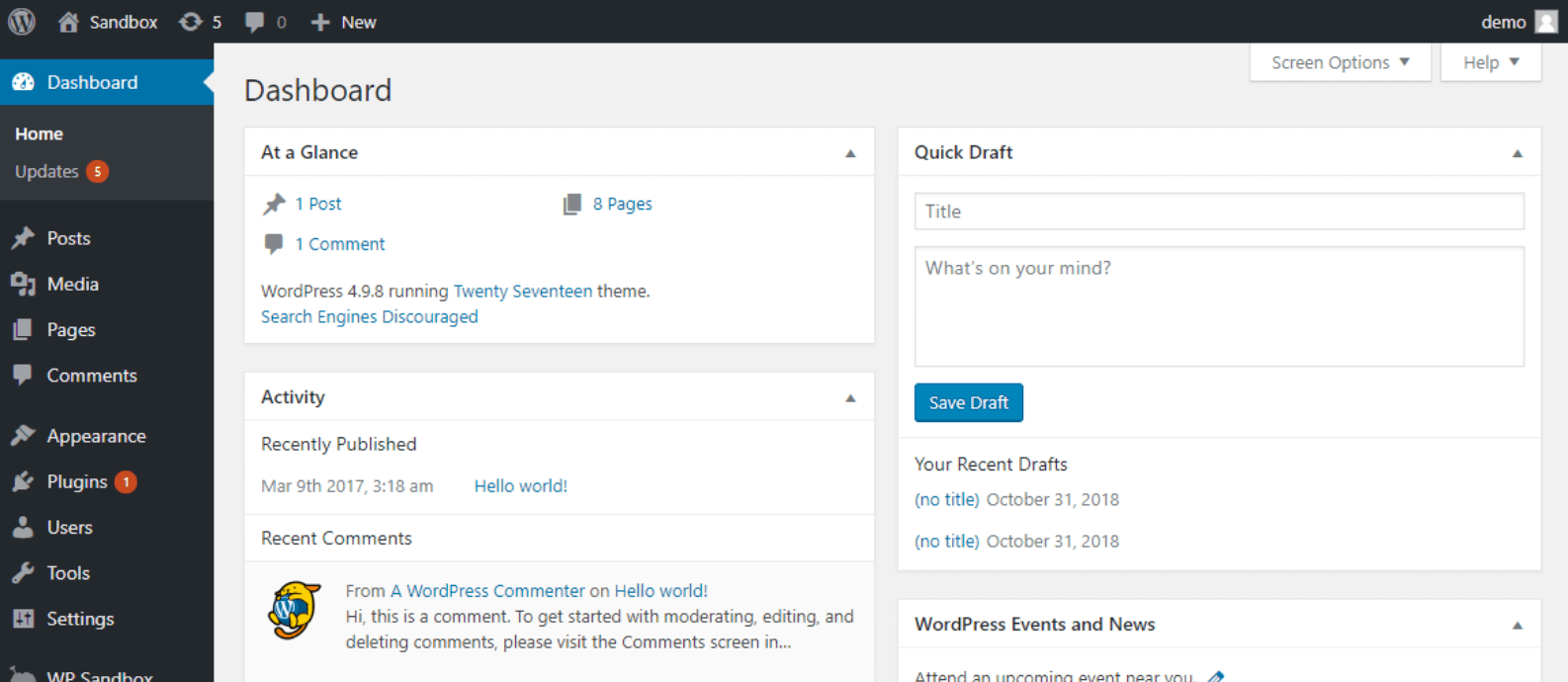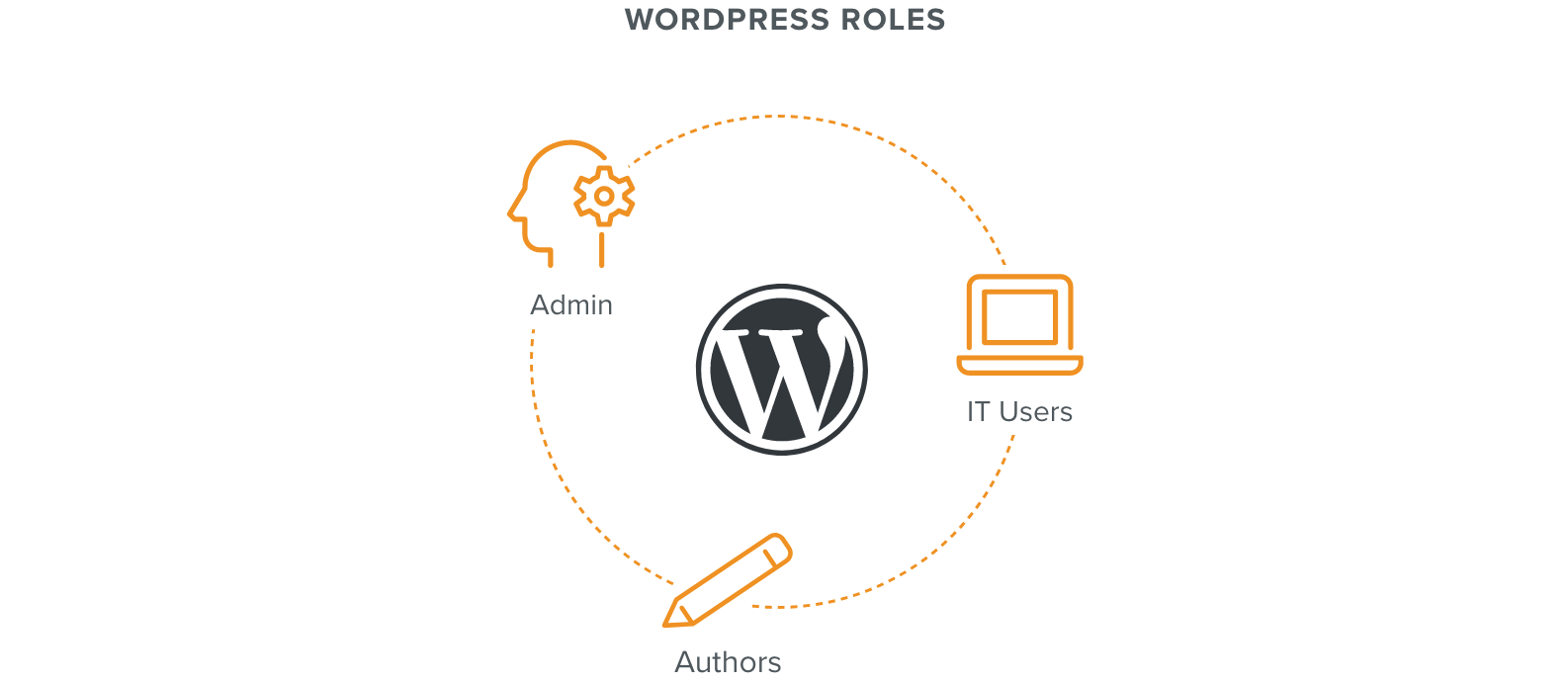Your CMS backend still needs to be built intuitively, using the best and most current tools at your disposal.
When it comes to building websites from the ground up, B2B designers and developers the world over can attest to the power of the WordPress (WP) ecosystem. More than 30 percent of websites are currently built on the WP platform, thanks to its easy learning curve, customizability, and available features for protecting user security and optimizing SEO performance. Another big selling feature is that WordPress boasts consistency across all pages, even for large sites with multiple authors.

Generally speaking, WordPress is ideal for launching clean, attractive sites that can scale with businesses of any size and scope. It’s so ingeniously simple, in fact, that it’s not even necessary for users to possess prior coding experience. But that doesn’t mean the platform will do all the work for you. Your CMS backend still needs to be built intuitively, using the best and most current tools at your disposal. Otherwise, the resulting site will feel clunky and unmanageable.
And while WordPress is one of our favorite options for building a user-friendly backend CMS, it’s certainly not the only one. If you’re still on the fence about which CMS is the best fit for your business needs, our Drupal vs. WordPress tool will help you decide.
Identifying the Best Team and Tools to Build a User-Friendly Backend
Now that you’ve chosen WordPress as the right platform to meet your business needs, this article will help you understand the major roles involved in effectively building and maintaining your site. We’ll also recommend some of the marketplace’s best plugins and tools for creating a lean, agile, and user-friendly WordPress experience, even as components of a company’s brand and web presence shift over time.
Who Are the People In Your WordPress CMS Neighborhood?
When we talk about user-friendliness, the first and most important step is to identify the individuals who will play a part in maintaining and optimizing the site. WordPress has six predefined roles—Super Admin, Administrator, Editor, Author, Contributor, and Subscriber—each with its own set of specific capabilities. But for the purposes of this article, we will focus on the three most important roles:
- ADMINISTRATORS
With the longest list of site responsibilities, admins are often seen as the most powerful users. They have the ability to access network administration features, add and edit posts by any author, install and delete plugins, implement themes that impact the overall look and feel of the site, and much more. - AUTHORS
As their name suggests, these individuals can write, edit, publish, and delete their own posts in the CMS. These content contributors typically do not have the ability to create categories on the site, but they can choose from existing categories. - IT USERS
These individuals are tasked with managing hosting, custom code updates, core code updates, and repository issues. In this particular instance, IT users manage WordPress-specific features designed to bring easy management, heightened security, and added speed to your WordPress site.

Admins: These Are the Best Plugins and Tools for Adding, Using, and Managing Features on WordPress
For your audience to give you their valuable personal information, you have to give them something that they want in return. Every individual has a different definition of what is valuable to them, but in general, if you deliver on these three needs, you will meet their expectations:
ADMIN TASKS
- Admin Columns let you organize, search, and edit posts, users, comments, media lists, and other content within the WordPress admin panel. A great User-Friendly plug-in
- WP Super Edit optimizes formatting by letting users control the WordPress WYSIWYG visual editor and add functionality via buttons and customized TinyMCE plugins.
- Broken Link Checker scours your blogs and sends alerts for any broken links that it finds. It’s also a great tool to use if you are thinking of deprecating links.
- Search Regex boosts the power and functionality of standard search features.
- WP Custom Admin Interface provides an awesomely simple way to customize the backend of WordPress for a seamless, enjoyable admin user experience.
User Management
- Advanced Access Manager, also known as AAM, is a powerfully user-friendly WordPress plugin designed to help you control every aspect of your website in your own way.
- User Switching allows you to quickly toggle between user accounts at the click of a button, instantly logging you out and back in another desired user.
Security
- The OAuth Single Sign On (SSO) WordPress plugin allows for single sign-on for WordPress via Azure AD, Azure B2C, AWS Cognito, WSO2, Okta, LinkedIn, Invision Community, Slack, Discord, and other custom OAuth 2.0/OpenID Connect providers.
- Okta Authentication enables Okta integration for WordPress. (An Okta account is required for this plugin.)
- Sucuri Inc. is a globally recognized authority in all matters related to website security, with a specialization in WordPress security and features that include:
– Security activity auditing
– File integrity monitoring
– Remote malware scanning
– Blacklist monitoring
– Effective security hardening
– Post-hack security actions
– Security notifications
– Website firewall (premium version only) - WordFence User-Friendly WordPress backebd control includes an endpoint firewall and malware scanner, built from the ground up to protect WordPress user information.
PERFORMANCE
- W3 Total Cache (W3TC) improves your WordPress site’s SEO and user experience by increasing website performance and reducing load times, leveraging features like content delivery network (CDN) integration and the latest best practices.
- Pantheon Cache is a built-in cache system that Pantheon provides via their hosting platform.
- WP Performance Score Booster makes your entire website faster by speeding up page-load time and instantly improving WordPress performance scores in services like GTmetrix, Pingdom, YSlow, and PageSpeed.
Authors: Streamline Writing and Themes with These WordPress Plugins
When it comes to allowing users to enter their own content, freedom and flexibility are essential. But as every developer knows, that freedom comes with the risk of the client unknowingly or unintentionally upending the entire site layout in the process. You can safeguard against this by implementing blades using the Advanced Custom Fields Pro plugin for WordPress.
Blades, when coupled with your customized CSS, allow users to affect a single change across all pages of the website. This makes it easy to build custom themes strong enough to carry your organizational branding, yet flexible enough to incorporate theme changes as they come. This is a must for User-Friendly WordPress backend
Another challenge Authors face is completing and managing content within their organization’s SEO parameters. The Yoast SEO Pro plugin extends WordPress’s standard SEO features, while optimizing meta tags and other link elements that search engines read before displaying results for users. Yoast SEO also lets you control whether pages are hidden or public, and continuously monitors your work as you’re writing new blogs, suggesting improvements along the way. For these reasons and more, Yoast SEO has fast become a popular addition for thousands of bloggers and content creators.
Related Asset

IT Leaders: Take Full Advantage of WordPress Hosting Features
- Pantheon is our favorite hosting platform for WordPress sites. Out of the box, it comes with a multi-dev environment (dev, stage, live) which helps multiple developers work together simultaneously, without overwriting each other’s work. Take a look at just some of Pantheon’s features and tools your team can take advantage of for optimizing the backend for a more user-friendly experience all around.
- Custom Code Updates are another great feature of the Pantheon hosting environment. They allow site owners to create copies of the site as a starting ground for multiple developers. Once the new functionality or code is ready to go live, developers can use that branch to merge into the master branch/live site.
- The Core Code Updates feature allows developers to manage the numerous core updates WordPress tends to have. Anytime there is a known core update, Pantheon creates a branch to allow developers to merge into the developer-current branch they are working on. This saves valuable time that developers can spend optimizing the site elsewhere.
- If you are being hosted on Pantheon, its Git Repo repository tool is pretty much a no-brainer that allows all code changes to be tracked by developers in one Repository. Note: We recommend BitBucket for owners who are not hosted on a platform that comes with its own repository. More than simple git code management, Bitbucket gives teams one place to plan projects, collaborate, test, and deploy the code they’ve written. Users with shell access to the server can connect BitBucket repo to the staging and live server to “git pull” changes to the desired environment.
The WordPress ecosystem is growing larger and more varied by the day, and new tools are constantly emerging to assist digital leaders managing sites for everything from small, early-stage startups to vast, complex tech companies. Whether you’re a site admin, content contributor, or IT specialist, it’s important to stay up to speed on the plugins and tools that will help you effectively manage both day-to-day tasks and long-term goals for your company’s WordPress site.






